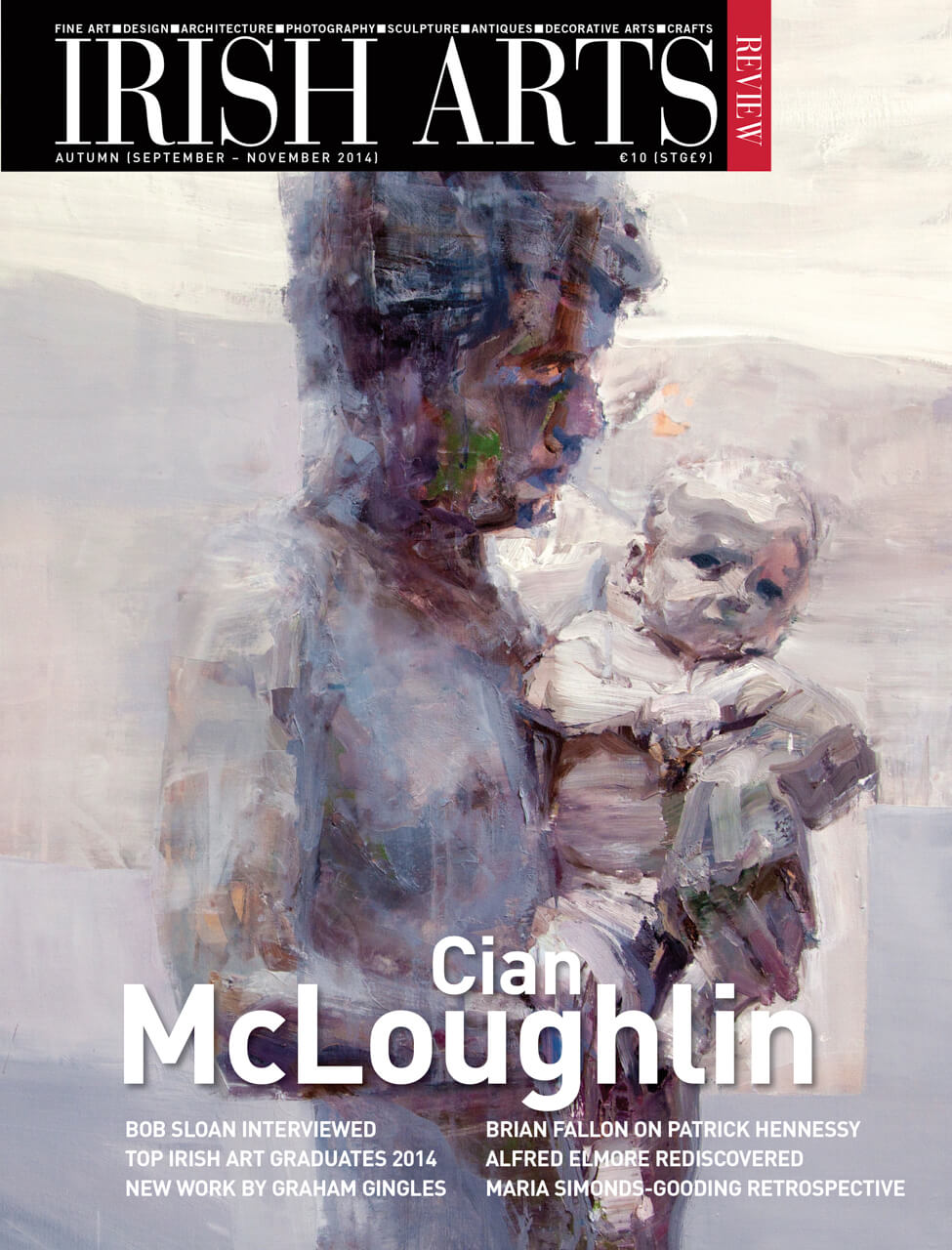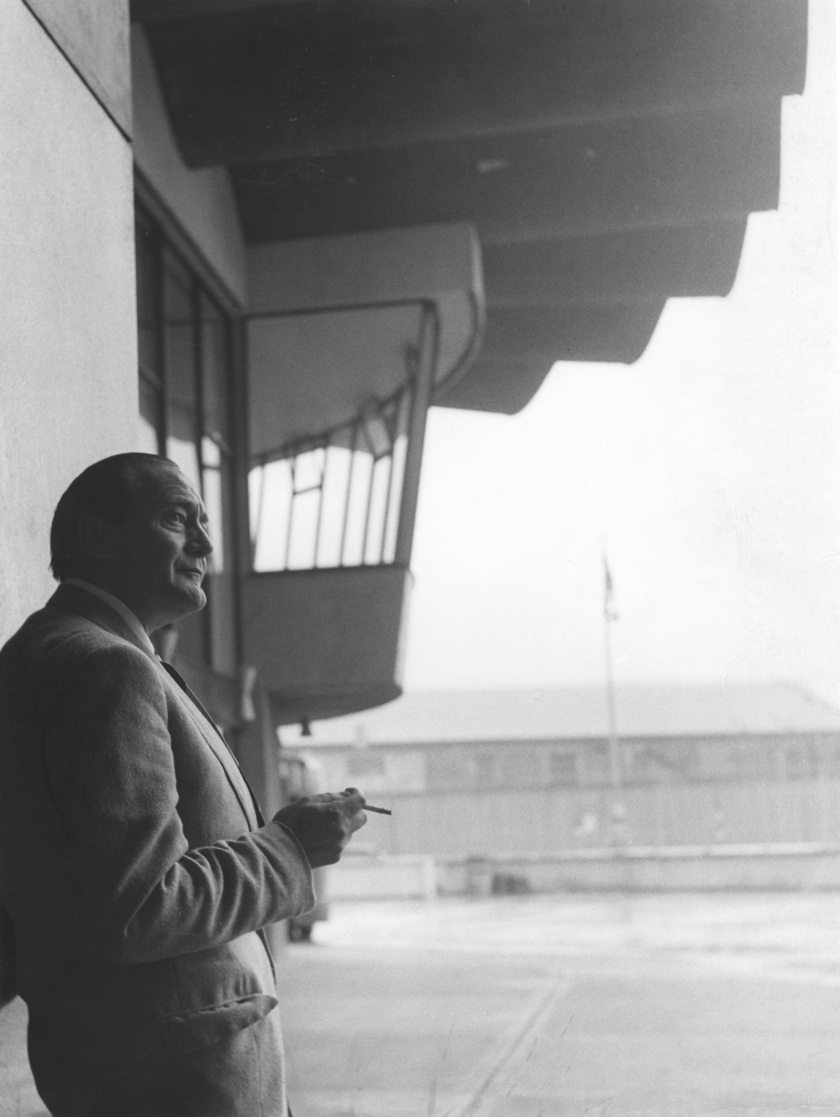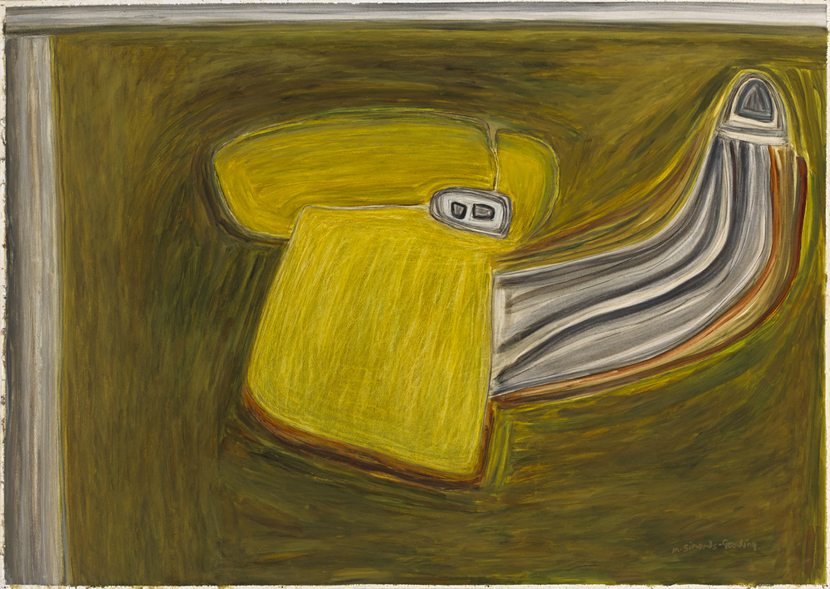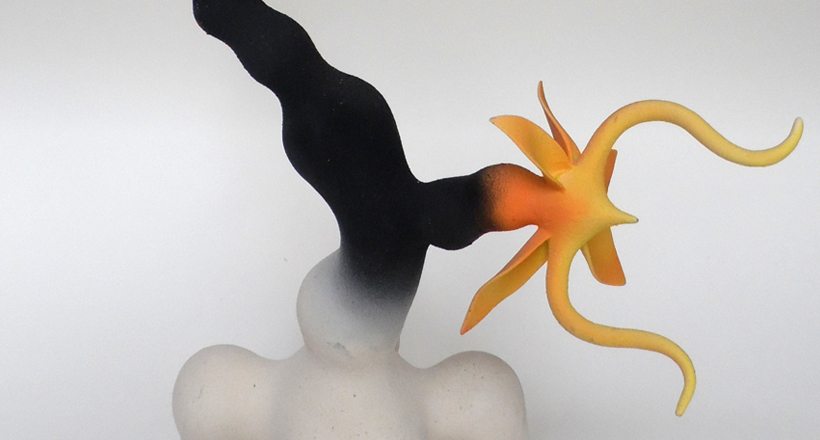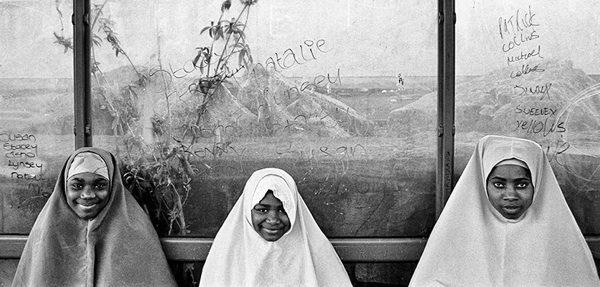
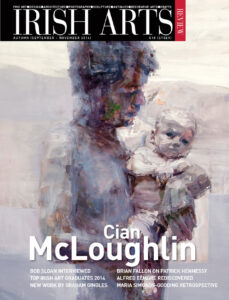
Ghostly traces of a Joycean city and people emerge as if from a palimpsest in Patrick Donald’s views of Dubliners, writes Stephanie McBride
The emerging technologies of photography and cinema infused James Joyce’s work. Besides establishing Dublin’s first cinema, the Volta in 1909, he inserted fictional photographs as repositories of memory into three stories in Dubliners – a landmark in literary modernist style and in visualising his city. Allusions to photography abound in Ulysses and Finnegans Wake from Bloom’s Hungarian ancestry having a daguerreotype studio in Budapest, to his daughter Milly working as a photographer. Joyce presents his Dublin stories as word-based daguerreotypes, with the intense, focused close-up of a photograph.
This embrace of place and people is also central to two other artists over the following century. Nevill Johnson’s photographs of Dublin in the 1950s capture the city’s rhythms and routines, often of long-vanished activities. Children swing on lamp-posts, haggard women commune below a fanlight, a lone man smokes at a bar counter.
Patrick Donald’s 21st-century images of Dubliners share with Johnson’s 1950s images an intense engagement and absorption with expressive elements of the city: narrow lanes, doorways, railings and brick, the incidental, everyday realities of the metropolis and its denizens. These images inevitably alert us to the capital’s changing faces and facades – often with a curious palimpsest-like quality, as inscriptions and traces of earlier times.
While Joyce famously lamented Dublin’s absence in art, images such as Johnson’s and Donald’s invite us to reimagine and revisit its streetlife.
In a brightly-coloured mural spanning the remains of a high wall, a young man sits like a Greek god on a bed of fruit, gazing at something in his hand – a razor or a phone perhaps. The two artists and their ladder merge into the fruit (Fig 1). From this painterly core, the colours drain away from the rest of the image, signalling that this is an interpretation, a creative construct not a simple, ‘direct’ documentation of reality. The rest of the street and sky become shades of grey: a passing horse and cart, derelict gaps where nature is beginning to reassert itself. Barely visible too amid the posters and adverts is the ‘Hardware’ sign of the abandoned shop. Ghost signs, traces of other times and trades, now relocated to out-of-town warehouses and shopping centres.
In another image through a shop window, a man lounges with feet up, lost in thought (Fig 3). Here again, history merges with the present in the topsy-turvy reflections and sense of place: the Ha’penny Bridge edging into the frame, then a tree, and a mix of resilient old buildings alongside recent additions on the quays. Two converging dotted lines of overhead lights draw us into this mosaic of images and towards the man’s head near the centre of it all. Donald’s lens captures not only the actual moment but the play with surfaces and levels. On these same quays, the bookstalls and book browsers (among whom we can imagine Leopold Bloom) of Nevill Johnson’s earlier photographs are now long gone, giving way to new boardwalks, bridges and other street furniture.
Leo Burdock’s front-of-house signage proudly announces its establishment in 1913, the year before Joyce’s Dubliners was first published. Donald’s portrait presents the cooks in their whites outside the shop beside the ‘Please Q; sign, hinting at this Dublin institution’s popularity. A team photo in the calm before the rush, a reminder too of newer ethnicities in Dublin in recent decades (Fig 8).
Donald’s image of College Green renders the city streets anew. This is deliberately not a traditional picture postcard. In the best conventions of street photography he is not set on the ‘decisive moment’ so much as the theatre of public space (Fig 2). An old building with its sandy warm tones is undergoing a make-over; builders’ signage and black scaffolding with silver-grey gaffer tape combine with the black downpipes and door to create a temporary colonnade, a proscenium arch for actors unknown – tourists or local passers-by perhaps. These pedestrians are allowed to slip into the picture, to ignore or glance casually toward the camera.
Elsewhere, Donald’s images capture other layers of modern Dublin: near Christchurch, a man in suit and hat with decisive gait (Fig 6), with election posters on a lamp post in the background; in Inchicore, three girls in headdresses pose happily at a bus shelter with its graffiti of Irish names and surnames (Fig 4), and a ghostly triptych for a background; and on Camden Street, a barber shop as a loving confection of condensed typefaces, shaving brushes, unguents and a Beckham-like model image, all overlaid with reflections from the street (Fig 7).
While Joyce famously lamented Dublin’s absence in art, images such as Johnson’s and Donald’s invite us to reimagine and revisit its streetlife – not as static, rigid museum-pieces but rather as signifiers of the ongoing reshaping of its social and material geography. Documentary record and artistic vision work together in a creative play or tension, to express the city’s polyphonic histories and geographies. Distant voices, while fainter, still echo down the decades. Images, though faded, still linger and these eloquent photographs explore the shifting contours, changing faces and lingering memories of the city.
All images ©The Artist.
Stephanie McBride is a director of the Gallery of Photography and a lecturer in film at NCAD.
From the IAR Archive
First published in the Irish Arts Review Vol 31, No 3, 2014
